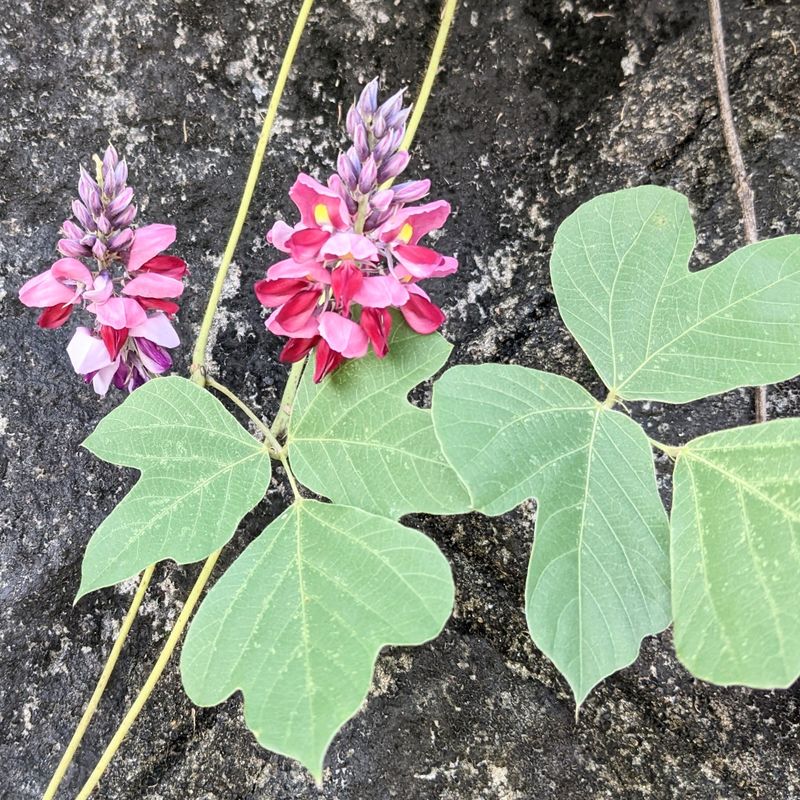Sep 20, 2022
Beautiful Invasive Kudzu

Here's what I know about the plant called kudzu (in Japanese: kuzu / 葛 / クズ).
I know that kudzu was introduced to the US from Japan and is invasive there too. It's native to Asia. (I know this thanks to teaching the Eiken reading section.)
There is kudzu growing along the small river near our house. It gets cut back every once in a while with all the weeds, but no one bothers to take the time to pull plants out by the roots, so they always come back soon. The stuff grows fast like bamboo and spreads from a vine touching the ground.
You might be familiar with the roots. They are used in a traditional cold medicine called kakkontou. It's helpful for relieving headaches and preventing a cold when you start to feel symptoms.
The whole plant can be used for livestock feed - I've seen a news report about goats 'mowing' slopes of these plants in cities where it's dangerous for people to operate weed whackers.
I've had some new curiosities about kudzu lately.
I first started wondering about these vines that grow so fast that they eat buildings. Do people use them to make baskets or something?
Yes, in America and in Japan, the vines are used to make baskets. In Japan they have traditionally been used to make material also. Craftspeople soak the vines in water to separate them into threads. A cool way to use the plentiful material, but sounds like too much work for me.
I started wondering why the sweets made from kuzuko (kudzu root powder) are so rare and expensive. Traditionally, kuzumochi and other sweets were made from kudzu roots. That practice has largely been replaced by using cheap katakuriko (potato starch, not made from chestnuts).
Why don't people just dig up the roots and use them?
(Since they grow like weeds...) I thought it was more about clean growing environments to use as a food.
The roots can get really big. I didn't realize that this means digging them up is a ton of work, not to mention the process of making powder.
For example, the roots from a five year old plant are about as big as a human leg. I saw a picture of roots the same size as a human lying next to them. Not as easy as pulling up some potatoes, that's for sure.
The roots are also really great at preventing soil erosion, so the plants are usually left alone in hilly residential areas.
One more question I had was about the flowers. Stay tuned for part two.
Here is The Japanese blog I read to learn more about kudzu, featuring photos of the roots as big as a small human, in case you wanna see it.



0 Comments